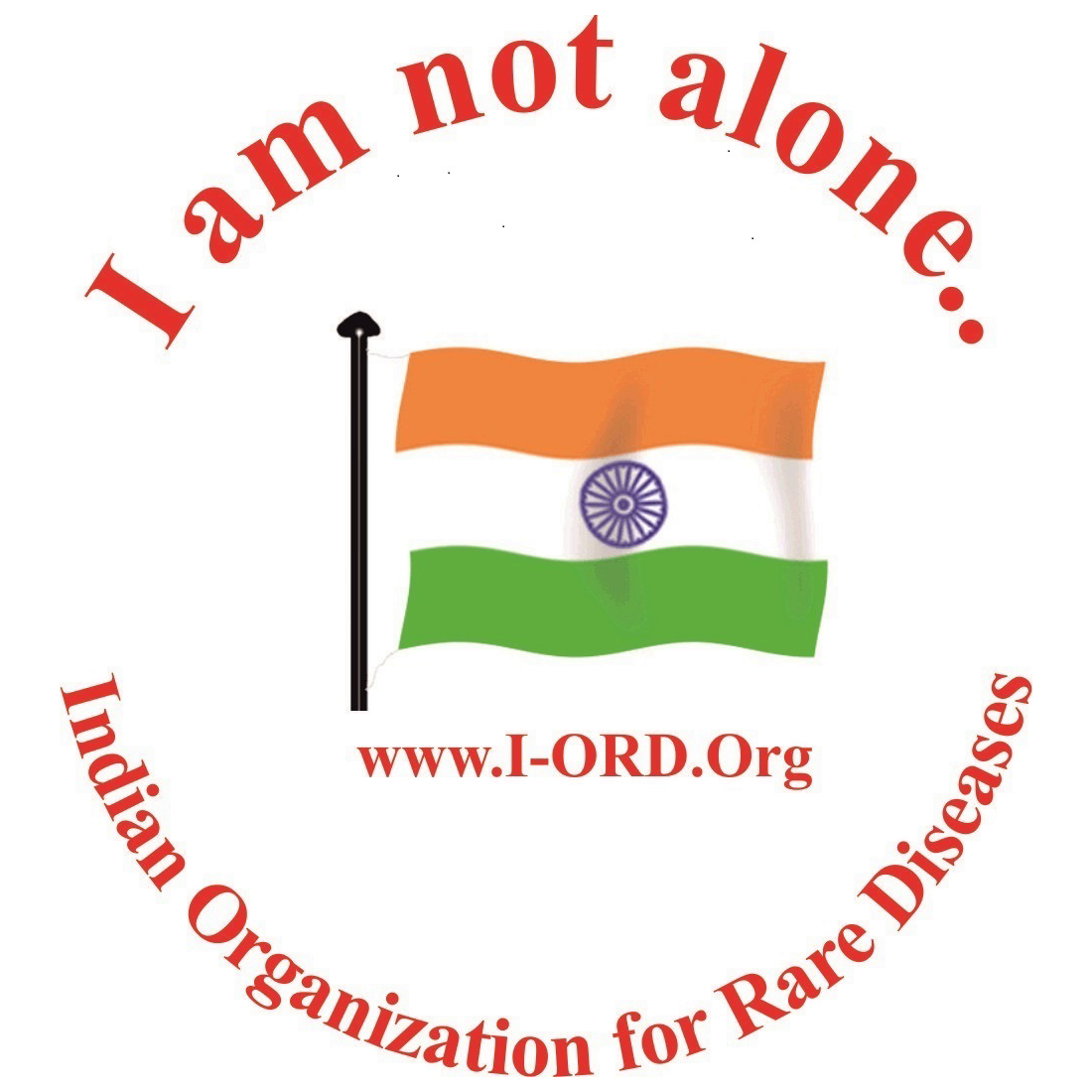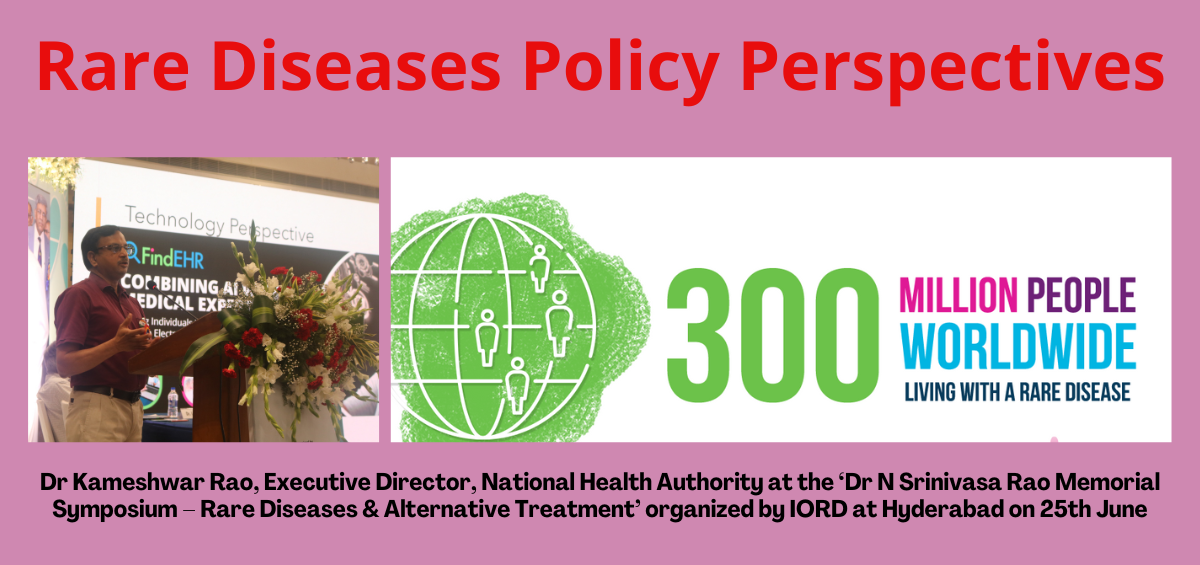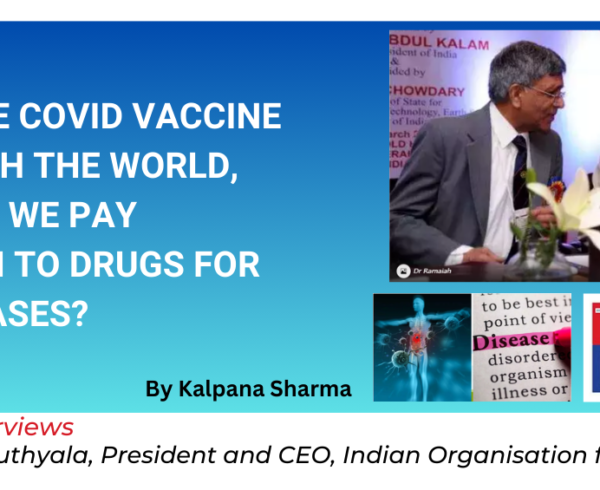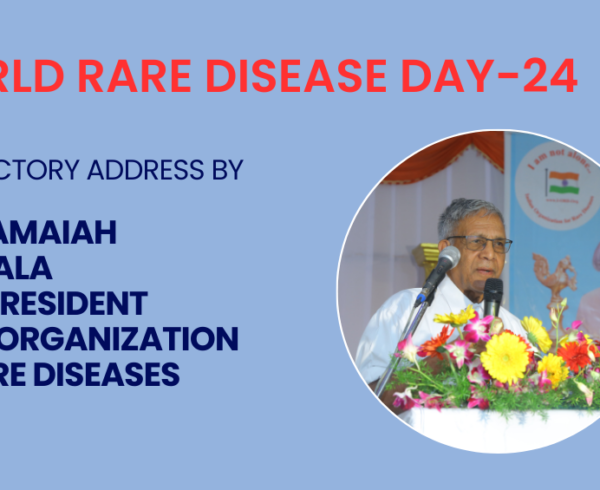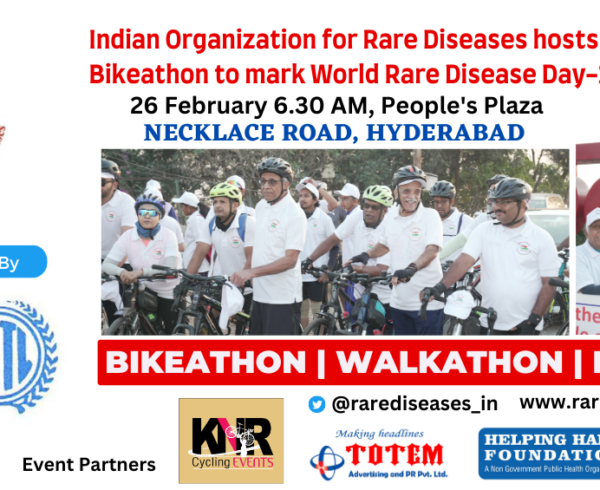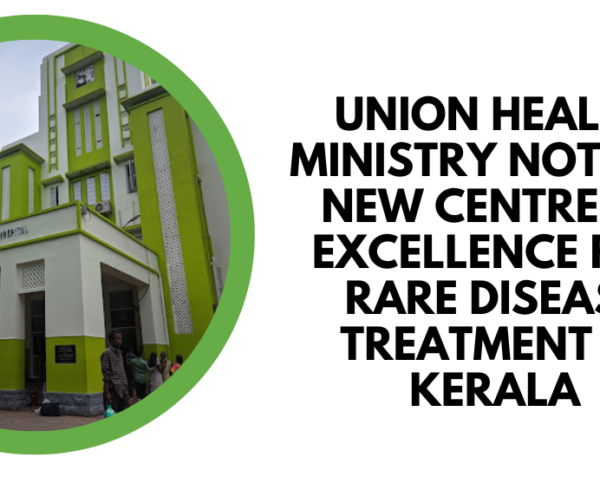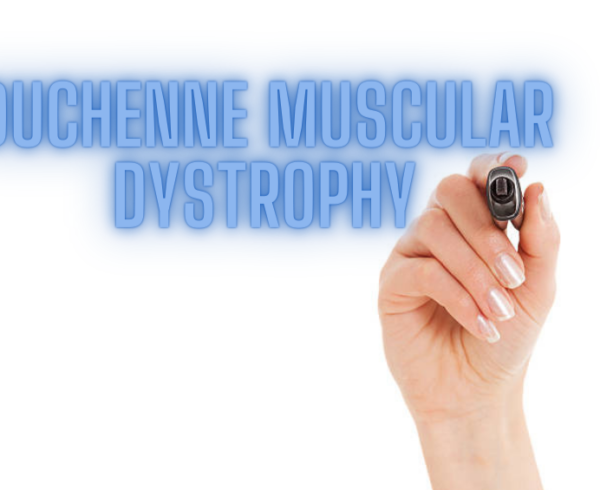(This is an abridged version of the presentation delivered by Dr Kameshwar Rao, Executive Director, National Health Authority at the ‘Dr N Srinivasa Rao Memorial Symposium – Rare Diseases & Alternative Treatment’ organized by IORD at Hyderabad on 25th June.)
Rare Diseases in Numbers:
The World Health Organisation (WHO) estimates that there are an average of 7000 known rare diseases that are thought to exist, but actual numbers are anybody’s guess. Every year, it is estimated that some 250-odd new Rare Diseases (RDs) are getting added. Of them, 80% of rare diseases have some identified genetic origin.
It is estimated that 50% of RDs affect children and unfortunately 30% of them do not see their 5th birthday. It is believed that 10% of individuals worldwide are “affected” by some kind of rare disease – they could be patients themselves, their families, caregivers, physicians, paramedics, counsellors, etc.
Here are some numbers for India but it is just a statistical estimation. There are approximately 7-8 crore Indian population affected with rare diseases. The largest numbers are estimated to be in Maharashtra, UP and Bihar. Unfortunately, 95% of the diseases have no approved treatment. It is again estimated that 25% of the world’s RD patients may be in India.
Common Rare Diseases in India:
These are some rare disease numbers in terms of frequency of occurrence per lakh population. Multiple sclerosis is on top of the list with 90 per lakh followed by Narcolepsy.
Multiple Sclerosis See (97/lakh)
Narcolepsy (50/lakh)
Primary Biliary Cholangitis (40/lakh)
Fabry Disease (30/lakh)
Cystic Fibrosis (25/lakh)
Haemophilia (20/lakh)
Retinal Dystrophy (13/lakh)
Hypophosphatasia (5/lakh)
Cerebral Leukodystrophy (3/lakh)
Urea metabolic disorders
AA Amyloidosis (1.5/lakh)
The special problems these rare diseases present for affected populations include:
- Difficulties in obtaining timely and accurate diagnoses.
- Lack of experienced healthcare providers to diagnose and treat.
- Useful, reliable and timely information may be hard to find.
- Research activities are less common.
- Developing new medicines may not be economically feasible.
- Many Treatments are very expensive.
- In developing countries, the problems are compounded by other resource constraints.
Global Perspective on Rare Diseases:
1) Although in numbers the rare diseases affect few people, the cumulative impact and disease burden is huge on public health and resources. With little access to care and prolonged suffering, drain finances not only do patients suffer but the families and caregivers to are impacted.
2) Rare diseases are defined differently by different countries. The World Health Organization defined them as those diseases occurring in <1 per 1000 individuals, but some countries like US and Japan chose to define the number of people while other countries chose different incidence rates from 1 in 1,000 to 5 in 10,000.
3) Although they have diverse aetiology and clinical presentation, they impact profoundly an individual’s mental and physical capabilities and reduce life expectancy.
4) The expenses involved in treatment, often out of pocket, do lead to catastrophic health expenditure oftentimes pushing into poverty.
5) In one study, it is found that they contribute to the global disease burden ten times higher than others including NCDs. Against an average of USD 26000 for NCDs, 24 rare diseases studied cost USD 266000 across 5 therapeutic areas, metabolic, neurological, immunological, congenital and haematological, in terms of drugs, treatment, hospitalization, loss of productivity, mortality costs, etc.
Rare Diseases: Milestone Events
It is generally seen that many government policymakers tend to remain silent when it comes to rare diseases. It has been only due to patient support groups, social activism and lobbying that things have moved. The first orphan drug Act came only in 1983.
In Europe, the first national plan came about in 2004 from France, followed by a plan for European Union in 2009.
This led the way to develop comprehensive policies on rare diseases. The NGOs and patient support groups remained active most notably in the EU and Canada.
- Key milestone event came in 1983 in the USA with US Orphan Drug Act
- Other countries followed suit much later – Australia, Japan, South Korea, Singapore, European Union
- National Plans – France 2004, European Union 2009
- The first movement towards comprehensive policy and strategies on diagnosis, treatment, care and support for rare diseases
- Non-Governmental and patient-driven alliance of patient organizations – EURORDIS in the EU, CORD in Canada
National Rare Disease Policies in several countries focus on:
- Formulating
a strong National Policy
- Access
to treatment
- To facilitate orphan drug designation, authorization and early access programs
- Diagnosis
programs
- Availability of Universal, highly accessible screening/diagnostic facilities
- Care
Coordination
- Resources designed for timely equitable access to evidence-based care
- Promoting
Research
- Focusing on innovation, technology and healthcare; registries
- Patient
Engagement
- Education, information and Support services for patients for engagement, advocacy and access
- Access
to treatment
The national Rare Disease policies centre around provisioning for better access to care, financial support, strategies on new drug discovery & treatment, making them available early, coordination of care to see that care is accessible in an equitable manner research and innovation, establishing centres of excellence, making centralized registries available and engaging patients for support services and advocacy.
These are broadly the contours of any national policy
Indian Policy Perspective: Timeline
• 2017: First National Policy on Rare Diseases – Faced Implementation Challenges
• 2018: Policy kept in abeyance and decided to reframe policy by review of the expert committee
• 2020: Draft National policy re-framed and put in the public domain for consultation
• 2020-21: DGHS-constituted expert committee Reviewed suggestions and comments of stakeholders
• 30/03/2021: National Policy for Rare Diseases Approved
Rare diseases in India: Classifications
Essentially, the policy divided rare diseases into three groups. They include those:
First Group: They are those diseases which are amenable to treatment with one-time high-cost drug treatment which is beyond the reach of the poor. Including renal and liver transplantations for certain diseases. They are amenable to one-time high-cost treatment. Examples:
- Lysosomal Storage Disorders, Adrenoleukodystrophy, Severe Combined Immunodeficiency Disorders
- Organ transplantation – Liver & Renal Transplantation
Second Group: They are those diseases that are managed through dietary and nutritional supplements low-cost but lifelong treatment. Examples:
Food/nutrient/hormone supplementation (e.g. Phenylketonuria, growth hormone deficiency, cystic fibrosis)
Third Group: Thirdly – very high-cost lifelong treatment is needed. Examples: Gaucher’s disease, Hunter’s syndrome, Duchenne muscular dystrophy
Financial Support Policy:
Of the Financial support, the policy envisions those rare diseases belonging to Group 1 are supported through what is known as Rashtriya Arogya Nidhi – a central government fund – where a beneficiary is given up to 50 lakhs (enhanced recently from earlier Rs 20 lakh) as a one-time measure. And who are the beneficiaries?
Those who are poor and vulnerable encounter catastrophic and impoverishing health expenditures. The beneficiary population is not just the BPL category but those forming the bottom 40% of India’s poor taken from the Ayushman Bharat PM-JAY beneficiary base. The funding is not done through PM-JAY but only the beneficiaries are selected from this eligibility list.
The criteria for selection for the rural and urban population is different. In rural, they are selected on the basis of 6 deprivation criteria – and in urban, the selection is through various employment categories. So, anyone belonging to these categories and who happens to have a group 1 rare disease can expect up to 50 lakhs in financial support.
Patients in Group 2 can expect support from state governments through the supply of drugs and vitamin and nutrient supplements through State government and National Health Mission programs
For Group 3 Rare Disease patients – the government has envisioned a crowd-sourcing route. Either voluntary or through corporate social responsibility. There are recommendations and proposals that digital platforms may be set up to connect the patients/hospitals and the donors directly. Additional unutilized funds of crowd-sourced funding can be utilized for research purposes. Even the CSR funding is extended to preventive health care as well. In fact, this is where NHA can play a greater role in setting up such digital platforms. NHA is currently the implementing authority for Ayushman Bharat Digital Mission and set up requisite building blocks and infrastructure.
Thrust Areas
Other parts of the policy include preventive strategies – primary prevention aimed at the identification of at-risk couples and premarital counselling, secondary prevention aimed at prenatal and newborn screening for early diagnosis, and tertiary preventative care for improving quality of life.
As with global policy standards – establishing centres of excellence and Nidan Kendras are also provisioned in the policy. Towards drug development – encouraging PSUs and local manufacturing is proposed. For cost reduction import duties are reduced.
R&D activities are promoted as well as an emphasis on resource development.
Preventive Strategies: Rare Diseases
- Primary prevention – identification of at-risk couples, premarital counselling
- Secondary prevention – Prenatal testing, New-born screening, early postnatal diagnosis
- Tertiary prevention – Supportive care, improving quality of life
Establishing Centres of Excellence: Rare Diseases
- Towards promoting research and innovation centres
- Nidan Kendras – for screening, testing, counselling
- Development of manpower resources
- R&D activities including orphan drugs
- Work towards affordable drugs, Reduction of customs duties on imported drugs
- Encouraging PSUs for local manufacturing of drugs
Technology Perspective: Rare Diseases
The 21st century has witnessed an explosion of Artificial intelligence. If one looks at a PubMed search one would be amazed at the sheer number of research publications on Artificial Intelligence and Machine learning in medical data.
They are using Artificial Intelligence and using different AI/ML algorithms to study data from images to demographic data to Labs, EHR, etc. The applications include diagnosis, prognosis, basic research, and treatment. Lastly, there are significant publications where observations included a high number of patients and a large sample size in each study.
There are applications and devices developed using Natural language processing algorithms such as symptom matcher, ADA, FindEHR, Face2Gene etc.
FindEHR is an acronym that stands for Finding Individuals Needing a Diagnosis through EHR. What it does basically is to train models by looking into EHRs, learning from the text that is entered in those records and when a new case is being registered it identifies a probability of a rare disease being present. Face2Gene is a mobile app that identifies from the face whether a rare disease could be present in the individual from the facial scan. These are some exciting AI//ML use cases and more work is being done in these areas.
Some other ways AI/ML technologies can help is by aiding clinical decision support systems and precision medicine – helping physicians reach conclusions faster. Even in advanced research and clinical trials- AI/ML is being used for patient matching.
Finally, CRISPR is the gene-editing or gene-modifying program that seemingly offers immense potential when treating genetically-mediated rare diseases.
Ayush Perspective: Rare Diseases
Mainstreaming of AYUSH
- Integrated approach to address the healthcare in the country – with NHM
- National Ayush Mission (NAM) – Co-location of AYUSH facilities at Primary Health Centres (PHCs), Community Health Centres (CHCs) and District Hospitals (DHs)
- Implemented National Programme for Prevention and Control of NCDs for health promotion, prevention and management of Non-Communicable Diseases (NCDs) or Lifestyle related disorders
- Research studies on standardized protocols through autonomous research councils
- Integration of Yoga into mainstream medical care
- Establish synergy between AYUSH streams and modern medicine
Homoeopathy perspective: Rare Diseases
The Union Ministry of AYUSH has taken several steps in mainstreaming AYUSH towards an integrated approach through the National Health Mission.
AYUSH facilities have been collocated in Primary health centres, CH and DH. Although this is not specifically aimed at rare disease purposes, what it makes is the availability of a pool of human resources who can be appropriately trained for the purpose of RDs. The ministry of AYUSH has also implemented national health programs for the prevention and treatment of NCDs.
Research is being done through four research councils, as well as the integration of Yoga into mainstream care. On the whole, the government is moving towards synergising Ayush with modern medicine.
Research Studies: Rare Diseases
1) Bigagli E, Luceri C, et al. Effect of Apis Mel on Prostate epithelial cell gene expression (RWPE-1 Cells) –
• showed increased expression of ILB1 gene
2) Olioso D, Marzotti M, et al. “ Effects of Gelsemium on pathway-focused gene expression profiling in neuronal cells” Journal of Ethnopharmacology (2014) 153
• expression of 56 genes was significantly changed (49 down-regulated and seven up-regulated).
3) Ellanghiyil S, Preethi K, et al. “Induction of apoptosis in tumour cells by some potentiated homeopathic drugs: implications of mechanism of action”. Integrated Cancer Therapy (2012)
• experiments with many homoeopathic drugs – Induced p53 gene expression (pro-apoptotic gene).
4) Saha S, Khuda-Bukhsh A, et al. “Ultra-highly diluted plant extracts of Hydrastis canadensis and Marsdenia condurango – Journal of Integrative Medicine (2015) 13.
• Induced epigenetic modifications and alter gene expression profiles in HeLa cells in vitro”.
5) Abha. “Advances in homeopathy: targeting of health promoting genes using sequence specific homeopathic DNAremedies”. Homeopathy 360, bjain.com/homeopathy360-wp/2017/02/18.
Homoeopathy Perspective: Rare Diseases
Given the fact that 85% of RDs are genetic in origin, there is a good chance that treating patients following the principles of homoeopathy can have a positive impact.
Homoeopathic Approach & Challenges
• Individualised / constitutional treatment – diagnostic terms not the criteria
• Theory of concomitant symptoms
• Symptomatic relief / Palliative approach
• Offers low-cost complementary/alternative choice of treatment
• Only anecdotal case reporting – nonuniform/non-standard
• Few peer-reviewed publications
• Need for collaborative research studies
The homoeopathic approach is highly individualised and constitutional based. There is no one-size-fits-all approach. Perhaps that is what modern medicine is also trying to approach in a similar fashion while attempting precision medicine and tailor-made treatments.
Homoeopathic drugs can be used even for palliative or symptomatic relief. It does offer either a low-cost complementary along with other drugs, supplements, and nutritive therapies as well as an alternative choice where either there are no medicines or where patients cannot afford the cost of treatments.
However, there are challenges. There are only anecdotal case reports and not many peer-reviewed studies on treating rare diseases. This may not inspire much confidence However there is a need for collaborative research in association with modern medicine.
